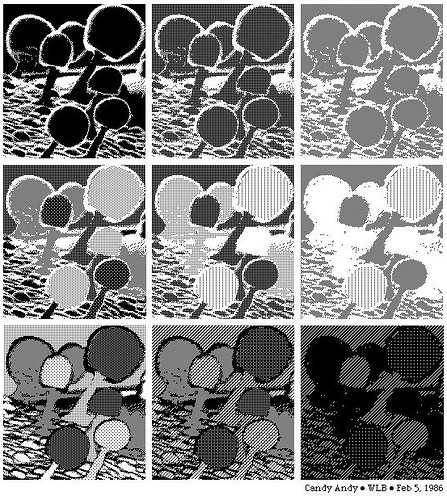I’ve been having casual thoughts about how we keep our knowledge bundled up in packets, some little, some large, some in-between, and so on. The outside of each packet has some hooks and eyes we use to link the packets together. But the ‘real’ knowledge is inside. For any given packet, that ‘real’ knowledge may be detailed, complete, and accurate, or it may be deficient in various ways, and there may not even be much of anything inside. The user of a packet – that is, the person in whose mind the packet exists – may not even have a good feel for what’s in a given packet. We can pick the packets up on the basis of the external hooks and eyes without ever even looking inside.
As much as possible we try to get by without actually opening them. We string them together and toss them back and forth with the hooks and eyes on the assumption that, when the time comes to actually deploy the knowledge, it will work like we want it to. In fact, we may never actually have to deploy the knowledge wrapped up in a particular knowledge contraption. In that case we may never know whether the reconfigured knowledge works or not.
Why would I believe such a thing?
For one thing, year after year, for two or three decades now, I’d tell myself that this or that writing project will only take roughly X words or pages that will require Y hours of work. And time after time X turns out to be 3X or 4X and Y becomes 4Y or 5Y. Why am I always underestimating? Always.
Perhaps the estimate is based on the external configuration of the knowledge packets thought to be involved in the project. In effect, one ‘counts’ the number of packets, and the number of hooks and eyes, and estimates the amount of time it will take to hook them up. There’s simply no way else to make the estimate. Once a packet is opened one’s beyond the estimating stage. You’re in the thick of it.
Trouble is, I’m rarely able to complete one of these projects without actually opening up a packet or three. And when that happens, all bets are off. Now I have to deal with the knowledge that’s inside the packet. It may be well-organized and ready to go. It may be a mess. It may be missing. Whatever. Dealing with the knowledge itself takes more time and is more complex than just stringing the packets together.
Similar things happen when working with others, whether in face-to-face conversation or through some written medium, these days often online. We start out exchanging packets and stringing them together. At some point, however, one or another thinks the packet configuration isn’t quite right. So we start opening up our packets. Surprises ensue.
It often turns out that we’d badly misjudged what was inside one another’s packets. The linkages that worked on the basis of external configurations falls apart when one looks inside the packets. And so now we’ve got to start rummaging around inside one another’s minds, trying to figure out just what we’re trying to do.
Sometimes we straighten things out. And sometimes we don’t.
Now, I suppose it would be nice to have a more precise statement of just what I’m talking about. But that, I’m afraid, would involve opening up some knowledge packets and dealing with the details. That, I fear, would send this modest little post off into oblivion. So, I’m not going there, at least not now. But I will say, that if I were to undertake such an explication, I’d likely start with the distinction between physiognomy and proposition I introduced in Strange Friends and New Lands.
An example or three would be nice as well. Again, that’s likely to involve opening up some packets. Why? Once an example is on the table, I’d have to start breaking it into parts and explaining it in terms of this packets business: Where, in the example, is the outside of the packet? What’s it like? How many hooks and eyes? How do they link packets together? And where, in the example, is the inside of the packet? What’s the REAL knowledge like? How’s is structured? How do you work with it?
All that’s bit much for a post that was intended to be something I just dash off and throw to the winds. So I’m afraid I must leave this packet contraption unopened and unexplored.
Perhaps next time.

Thanks, you just explained my life in few paragraphs. Maybe, at least, I won't get too mad at myself for the next wildly inaccurate estimate. Especially if I procrastinate to read "Strange Friends"
ReplyDeleteYou're welcome. Glad to be of service in the life-explaining biz.
ReplyDelete